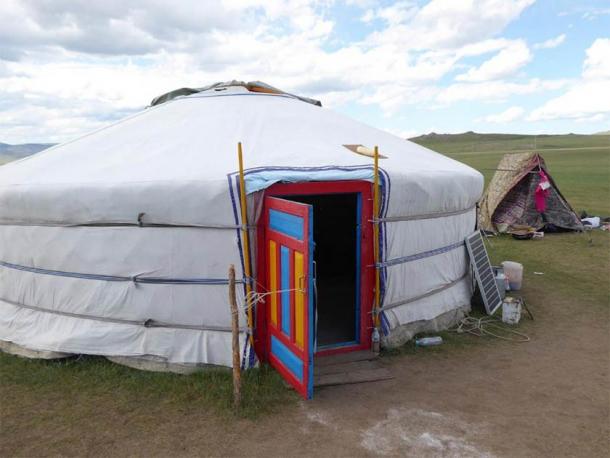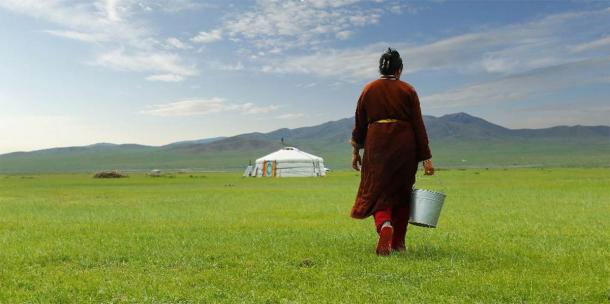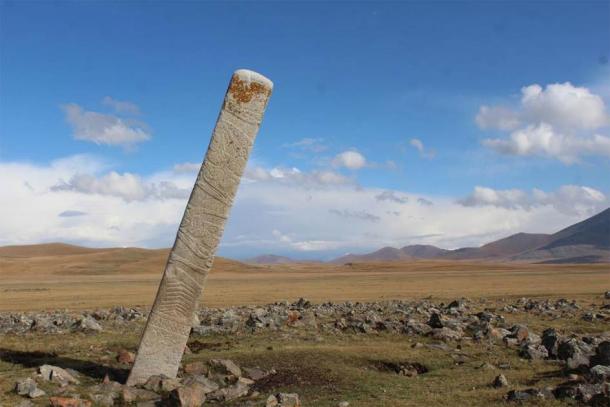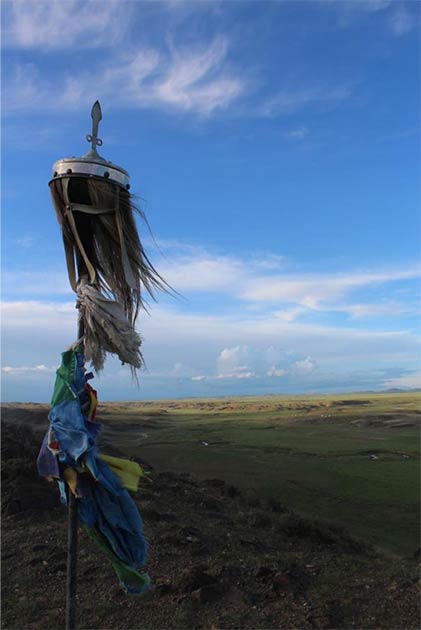The Xiongnu, the first nomadic empire in Asia, left no known written records to explain their origins, making this an intriguing ancient genetic mystery. But a new study has cast light on how the Xiongnu and Mongol empires and other ancient Central Asian cultures formed and interacted with each other. Researchers have taken on the daunting task of reconstructing the 6,000 year genetic history of Mongolia – including the time of the rise and fall of the nomadic empires – with some surprising results.
A release by the Max Planck Institute reports that there were several organized and “highly influential nomadic empires” that populated the eastern Eurasian Steppe between the late Bronze Age and the Middle Ages. The Xiongnu was the first, with a strong influence in the region from 209 BC – 98 AD. The last powerful empire of nomads in the area was the Mongol empire from 916-1125 AD.
Although these nomadic empires had significant impacts on the geopolitics and demographics of Eurasia, there are still large knowledge gaps in their origins and the genetic relationships they formed with other people in the area. This is why the new genetic study is so important.
A Landmark Study of Ancient Eastern and Inner Asian Genomes
The new study published in the journal Cell is the result of an international collaboration between researchers from the Max Planck Institute for the Science of Human History, the National University of Mongolia, and other partner institutions in Mongolia, Russia, Korea, and the United States. It is one of the largest studies of ancient Eastern and Inner Asian genomes to date, and covers a period of 6,000 years – from 4600 BC to 1400 AD.
To complete the monumental task, the researchers write that they analyzed new genome-wide data for 214 individuals from 85 Mongolian and 3 Russian sites in the Baikal region . They combined that information with the genomic data of 19 Bronze Age individuals from northern Mongolia and genetic datasets they accessed on ancient populations living in the nearby regions of Russia and Kazakhstan. Finally, worldwide modern reference populations were added to the mix.

Present-day home in the Mongolian countryside, known as a ger (Mongolian) or yurt (Russian). ( Christina Warinner )
Dairy Pastoralism Arrives and Changes Everything
The first major point of interest that the researchers cover is the pastoralist expansion into Mongolia around 3000 BC, which was introduced by the Afanasievo culture of the Altai mountains. The introduction of pastoralism created a huge shift in lifestyle in the region, even though the migrants had little genetic impact on the hunter-gatherers of Ancient Northeast Asian (ANA) and Ancient Northern Eurasian (ANE) ancestry who they met.
Another key point in the study is that the researchers discovered that by the Late Bronze Age there were three distinct biogeographical groups living in west, north, and south-central Mongolia, but all of them practiced dairy pastoralism . Even though dairy pastoralism has been an important part of life in the region for more than 5,000 years, the researchers “found no evidence for the selection of lactase persistence, a genetic trait that allows lactose digestion,” according to the release.

Farmer carrying a bucket of milk after milking a cow in the grasslands of Mongolia. ( MICHEL /Adobe Stock)
Dr. Christina Warinner, a senior author of the study, a professor of Anthropology at Harvard University and a research group leader at the Max Planck Institute for the Science of Human History, explained the significance of this discovery, “The absence of lactase persistence in Mongolian populations both today and in the past challenges current medical models of lactose intolerance, and suggests a much more complicated prehistory of dairying. We are now turning to the gut microbiome to understand how populations adapt to dairy-based diets,” she said .
Discovering the Genetic Origins of Ancient Nomadic Empires
The three biogeographical groups remained genetically separate for more than a millennium, until there was a widespread emergence of horseback riding, which occurred during the late second and early first millennium BC. Science Magazine reports that about 1000 years after the Afanasievo culture, another group from the steppes, called the Sintashta, arrived in the region and “brought fateful cultural changes to Mongolia’s grasslands.” Archaeologist William Taylor of the University of Colorado said that around 1200 BC, researchers have found “equestrian innovations including selective breeding for size and endurance, plus bridle bits, riding pants, and even early saddles.”

A leaning Deer Stone placed in front of dozens of small stone mounds containing ritually-sacrificed horse burials at the Bronze Age monument site of Ikh Tsagaanii Am, Bayankhongor Province, central Mongolia. ( William Taylor )
The researchers write in their paper that the “Xiongnu emerged from the mixing of these populations and those from surrounding regions.” Dr. Choongwon Jeong, lead author of the new study and a professor of Biological Sciences at Seoul National University, further explained that “Rather than a simple genetic turnover or replacement, the rise of the Xiongnu is linked to the sudden mixture of distinct populations that had been genetically separated for millennia. As a result, the Xiongnu of Mongolia show a spectacular level of genetic diversity that reflects much of Eurasia.”
The nomadic Mongol empire , on the other hand, had almost completely lost the ancient ANE ancestry, and had added much more Eastern Eurasian ancestry to their gene pool. As Ke Wang, co-first author of the study and a PhD student at the Max Planck Institute for the Science of Human History stated:
“Our study of ancient Mongolia reveals not only early genetic contributions from populations on the Western Steppe, but also a marked genetic shift towards eastern Eurasian ancestry during the Mongol Empire. The region has a remarkably dynamic genetic history, and ancient DNA is beginning to reveal the complexity of population events that have shaped the Eurasian Steppe.”
Finally, Dr. Erdene Myagmar, co-senior author of the study and professor of Anthropology and Archaeology at the National University of Mongolia, hopes that researchers who examine the 6,000 year genetic history of Mongolia offered by this major study will be inspired to further explore “the rich and complex relationships between ancestry, culture, technology, and politics in the rise of Asia’s nomadic empires .”

A horse-hair banner adorns a hillside monument in central Bayankhongor province, Mongolia. ( William Taylor )
Top Image: Researchers have unraveled the genetic origins of nomadic empires in Mongolia. Here a representation of people of the Xiongnu nomadic empire. Source: ringmar.net
 RSS Feed
RSS Feed













 November 7th, 2020
November 7th, 2020  Awake Goy
Awake Goy  Posted in
Posted in  Tags:
Tags: 
















